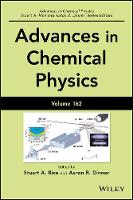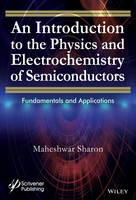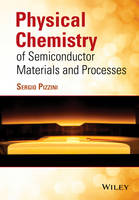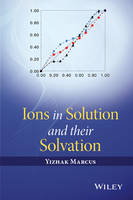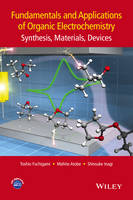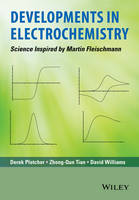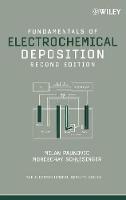Atomic-Scale Modelling of Electrochemical Systems
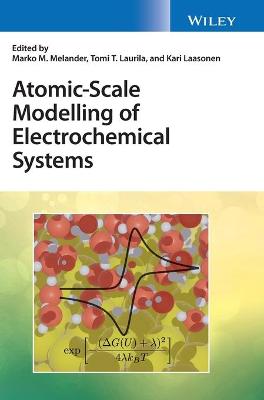 -15%
portes grátis
-15%
portes grátis
Atomic-Scale Modelling of Electrochemical Systems
Melander, Marko M.; Laasonen, Kari; Laurila, Tomi T.
John Wiley & Sons Inc
10/2021
368
Dura
Inglês
9781119605614
15 a 20 dias
840
1 Introduction to Atomic Scale Electrochemistry 3
Marko M. Melander, Tomi Laurila, and Kari Laasonen
1.1 Background 3
1.2 The thermodynamics of electrified interface 4
1.2.1 Electrode 6
1.2.2 Electrical double layer 7
1.2.3 Solvation sheets 8
1.2.4 Electrode potential 8
1.3 Chemical interactions between the electrode and redox species 12
1.4 Reaction kinetics at electrochemical interfaces 13
1.4.1 Outer and inner sphere reactions 13
1.4.2 Computational aspects 16
1.4.3 Challenges 17
1.5 Charge transport 18
1.6 Mass transport to the electrode 18
1.7 Summary 19
References 20
Part II 25
2 Retrospective and Prospective Views of Electrochemical Electron Transfer Processes: Theory and Computations 27
Renat R. Nazmutdinov and Jens Ulstrup
2.1 Introduction - interfacial molecular electrochemistry in recent retrospective 27
2.1.1 An electrochemical renaissance 27
2.1.2 A bioelectrochemical renaissance 27
2.2 Analytical theory of molecular electrochemical ET processes 28
2.2.1 A Reference to molecular ET processes in homogeneous solution 28
2.2.2 Brief discussion of contemporary computational approaches 30
2.2.3 Molecular electrochemical ET processes and general chemical rate theory 31
2.2.4 Some electrochemical ET systems at metal electrodes 35
2.2.4.1 Some outer sphere electrochemical ET processes 35
2.2.4.2 Dissociative ET: the electrochemical peroxodisulfate reduction 38
2.2.5 d-band, cation, and spin catalysis 39
2.2.6 New solvent environments in simple electrochemical ET processes - ionic liquids 40
2.2.7 Proton transfer, proton conductivity, and proton coupled electron transfer (PCET) 40
2.2.7.1 Some further notes on the nature of PT/PCET processes 44
2.2.7.2 The electrochemical hydrogen evolution reaction, and the Tafel plot on mercury 44
2.3 Ballistic and stochastic (Kramers-Zusman) chemical rate theory 45
2.4 Early and recent views on chemical and electrochemical long-range ET 50
2.5 Molecular-scale electrochemical science 53
2.5.1 Electrochemical in situ STM and AFM 53
2.5.2 Nanoscale mapping of novel electrochemical surfaces 54
2.5.2.1 Self-assembled molecular monolayers (SAMs) of functionalized thiol [192-194] 54
2.5.3 Electrochemical single-molecule ET and conductivity of complex molecules 56
2.5.4 Selected cases of in situ STM and STS of organic and inorganic redox molecules 58
2.5.4.1 The viologens 58
2.5.4.2 Transition metal complexes as single-molecule in operando STM targets 59
2.5.5 Other single-entity nanoscale electrochemistry 61
2.5.5.1 Electrochemistry in low-dimensional carbon confinement 61
2.5.5.2 Electrochemistry of nano- and molecular-scale metallic nanoparticles 62
2.5.6 Elements of nanoscale and single-molecule bioelectrochemistry 63
2.5.6.1 A single-molecule electrochemical metalloprotein target - P. aeruginosa azurin 63
2.5.6.2 Electrochemical SPMs of metalloenzymes, and some other "puzzles" 65
2.6 Computational approaches to electrochemical surfaces and processes revisited 67
2.6.1 Theoretical methodologies and microscopic structure of electrochemical interfaces 67
2.6.2 The electrochemical process revisited 68
2.7 Quantum and computational electrochemistry in retrospect and prospect 69
2.7.1 Prospective conceptual challenges in quantum and computational electrochemistry 70
2.7.2 Prospective interfacial electrochemical target phenomena 71
2.7.2.1 Some conceptual, theoretical, and experimental notions and challenges 71
2.7.2.2 Non-traditional electrode surfaces and single-entity structure and function 71
2.7.2.3 Semiconductor and semimetal electrodes 72
2.7.2.4 Metal deposition and dissolution processes 72
2.7.2.5 Chiral surfaces and ET processes of chiral molecules 72
2.7.2.6 ET reactions involving hot electrons (femto-electrochemistry) 73
2.8 A few concluding remarks 73
Acknowledgement 74
References 74
Part III 93
3 Continuum Embedding Models for Electrolyte Solutions in First-Principles Simulations of Electrochemistry 95
Oliviero Andreussi, Francesco Nattino, and Nicolas Georg Hoermann
3.1 Introduction to continuum models for electrochemistry 95
3.2 Continuum models of liquid solutions 97
3.2.1 Continuum interfaces 98
3.2.2 Beyond local interfaces 103
3.2.3 Electrostatic interaction: polarizable dielectric embedding 105
3.2.4 Beyond electrostatic interactions 107
3.3 Continuum diffuse-layer models 109
3.3.1 Continuum models of electrolytes 109
3.3.2 Helmholtz double-layer model 110
3.3.3 Poisson-Boltzmann model 111
3.3.4 Size-modified Poisson-Boltzmann model 113
3.3.5 Stern layer and additional interactions 114
3.3.6 Performance of the diffuse-layer models 114
3.4 Grand canonical simulations of electrochemical systems 118
3.4.1 Thermodynamics of interfaces 119
3.4.2 Ab-initio based thermodynamics of electrochemical interfaces 121
3.4.3 Grand canonical simulations and the CHE approximation 123
3.5 Selected applications 126
Acknowledgments 129
References 129
4 Joint and grand-canonical density-functional theory 139
Ravishankar Sundararaman and Tomas A. Arias
4.1 Introduction 139
4.2 JDFT variational theorem and framework 142
4.2.1 Variational principle and underlying theorem 142
4.2.2 Separation of effects and regrouping of terms 146
4.2.3 Practical functionals and universal form for coupling 147
4.3 Classical DFT with atomic-scale structure 148
4.3.1 Ideal gas functionals with molecular geometry 149
4.3.1.1 Effective ideal gas potentials 149
4.3.1.2 Integration over molecular orientations 150
4.3.1.3 Auxiliary fields 151
4.3.2 Minimal excess functionals for molecular fluids 152
4.4 Continuum solvation models from JDFT 157
4.4.1 JDFT linear response: nonlocal 'SaLSA' solvation 158
4.4.2 JDFT local limit: nonlinear continuum solvation 160
4.4.3 Hybrid semi-empirical approaches: 'CANDLE' solvation 163
4.5 Grand-canonical DFT 164
4.6 Conclusions 168
References 169
5 Ab initio modeling of electrochemical interfaces and determination of electrode potentials 173
Jia-Bo Le, Xiao-Hui Yang, Yong-Bing Zhuang, Feng Wang, and Jun Cheng
5.1 Introduction 173
5.2 Theoretical background of electrochemistry 175
5.2.1 Definition of electrode potential 175
5.2.2 Absolute potential energy of SHE 178
5.3 Short survey of computational methods for modeling electrochemical interfaces 179
5.4 Ab initio determination of electrode potentials of electrochemical interfaces 180
5.4.1 Work function based methods 180
5.4.1.1 Vacuum reference 180
5.4.1.2 Vacuum reference in two steps 181
5.4.2 Reference electrode based methods 183
5.4.2.1 Computational standard hydrogen electrode 183
5.4.2.2 Computational standard hydrogen electrode in two steps 185
5.4.2.3 Computational Ag/AgCl reference electrode 187
5.5 Computation of potentials of zero charge 187
5.6 Summary 190
Acknowledgement 191
References 191
6 Molecular Dynamics of the Electrochemical Interface and the Double Layer 201
Axel Gross
6.1 Introduction 201
6.2 Continuum description of the electric double layer 202
6.3 Equilibrium coverage of metal electrodes 204
6.4 First-principles simulations of electrochemical interfaces and electric double layers 209
6.5 Electric double layers at battery electrodes 213
6.6 Conclusions 216
Acknowledgement 216
References 217
7 Atomic-Scale Modelling of Electrochemical Interfaces through Constant Fermi Level Molecular Dynamics 221
Assil Bouzid and Alfredo Pasquarello
7.1 Introduction 221
7.2 Method 222
7.3 CFL-MD in aqueous solution: Determination of redox levels 223
7.4 CFL-MD at metal-water interface: The case of the Volmer reaction 228
7.5 Referencing the bias potential to the SHE 230
7.6 Macroscopic properties at the metal-water interface 232
7.7 Atomic-scale processes at the metal-water interface 236
7.8 Conclusion 238
Acknowledgements 238
References 239
Part IV 241
8 From electrons to electrode kinetics: A tutorial review 243
Stephen Fletcher
8.1 Global electro-neutrality 243
8.2 The electrochemical reference state 243
8.3 The chemical potential 246
8.4 The electrostatic potential 246
8.5 The electrochemical potential 246
8.5.1 The molar electrochemical potential 248
8.5.2 The electrochemical potential of a single electron 248
8.5.3 The Nernst equation 248
8.5.4 Fermi-Dirac distribution function 250
8.5.5 The molar electrochemical potential of an electron 251
8.5.6 Parsing the electrochemical potential. (I) Metal in a vacuum 251
8.5.7 The Volta potential difference 252
8.5.8 Scanning Kelvin Probe Microscopy 253
8.5.9 The membrane potential 254
8.5.10 The electrochemical potential of a single proton 254
8.5.11 The proton motive force 255
8.5.12 The standard hydrogen half-cell 256
8.5.13 The hydrated electron 257
8.5.14 The hydrogen atom H* 258
8.5.15 Parsing the electrochemical potential. (II) The co-sphere 258
8.5.16 Electron transfer (general introduction) 259
8.5.17 Johnson-Nyquist noise 260
8.5.18 The Molar Gibbs reorganization energy 260
8.5.19 The reaction co-ordinate 261
8.5.20 The vertical energy gap 261
8.5.21 Permittivity of solutions 263
8.6 Electrolytes and non-electrolytes 263
8.6.1 Equivalent circuit of a non-electrolyte solution 265
8.6.2 Equivalent circuit of an electrolyte solution 265
8.6.3 Probability of an electron jump 266
8.6.4 The Klopman-Salem equation 267
8.6.5 Electrode kinetics 268
8.6.6 Homogeneous kinetics, first order 269
8.6.7 Homogeneous kinetics, second order 269
8.6.8 Homogeneous versus heterogeneous kinetics 270
8.6.9 Tunneling layer approximation 271
8.6.10 The back of the envelope 272
8.6.11 The total rate constant of an electron transfer process 273
8.7 Heterogeneous electron transfer 275
8.7.1 Tafel slopes for multi-step reactions 278
8.8 The future: supercatalysis by superexchange 280
References 282
9 Constant potential rate theory - general formulation and electrocatalysis 287
Marko M. Melander
9.1 Kinetics at electrochemical interfaces 287
9.2 Rate theory in the grand canonical ensemble 288
9.3 Adiabatic reactions 289
9.3.1 Classical nuclei 289
9.3.2 Fixed potential empirical valence bond theory 290
9.3.3 Nuclear tunneling 291
9.4 Non-adiabatic reactions 292
9.4.1 Non-adiabatic reactions in electrochemistry 292
9.4.2 Rate of ET and CPET reactions 293
9.5 Computational aspects 295
9.6 Conclusions 296
References 297
Part V 301
10 Thermodynamically consistent free energy diagrams with the solvated jellium method 303
Georg Kastlunger, Per Lindgren, and Andrew A. Peterson
10.1 Computational studies of electrochemical systems - Recent advances and modern challenges 303
10.2 Thermodynamic consistency with a decoupled computational electrode model 305
10.3 Solvated jellium method (SJM) 308
10.3.1 Introduction 308
10.3.2 Electrostatic potential profiles and charge localization 309
10.3.3 Workflow of potential equilibration 313
10.3.4 Shape of the jellium background charge 319
10.4 Example: Mechanistic studies of the hydrogen evolution reaction (HER) 319
10.4.1 Potential dependence of the elementary steps of HER 320
10.4.2 Charge transfer along reaction trajectories 323
10.4.3 Thermodynamically consistent free energy diagrams from first principles 323
References 326
11 Generation of Computational Data Sets for Machine Learning Applied to Battery Materials 329
Arghya Bhowmik, Felix Tim Boelle, Ivano E. Castelli, Jin Hyun Chang, Juan Maria Garcia Lastra, Nicolai Rask Mathiesen, Alexander Sougaard Tygesen, and Tejs Vegge
11.1 Introduction 329
11.2 Computational workflows for production of moderate-fidelity data sets 330
11.2.1 Ionic diffusion: NEB calculations 333
11.2.1.1 Symmetric NEB 333
11.2.1.2 Choice of functionals for NEB 335
11.2.2 Disordered materials: Cluster Expansion 337
11.3 High-Fidelity data sets: Ab initio molecular dynamics simulations 340
11.4 Machine Learning 343
Acknowledgements 346
References 346
Index 355
1 Introduction to Atomic Scale Electrochemistry 3
Marko M. Melander, Tomi Laurila, and Kari Laasonen
1.1 Background 3
1.2 The thermodynamics of electrified interface 4
1.2.1 Electrode 6
1.2.2 Electrical double layer 7
1.2.3 Solvation sheets 8
1.2.4 Electrode potential 8
1.3 Chemical interactions between the electrode and redox species 12
1.4 Reaction kinetics at electrochemical interfaces 13
1.4.1 Outer and inner sphere reactions 13
1.4.2 Computational aspects 16
1.4.3 Challenges 17
1.5 Charge transport 18
1.6 Mass transport to the electrode 18
1.7 Summary 19
References 20
Part II 25
2 Retrospective and Prospective Views of Electrochemical Electron Transfer Processes: Theory and Computations 27
Renat R. Nazmutdinov and Jens Ulstrup
2.1 Introduction - interfacial molecular electrochemistry in recent retrospective 27
2.1.1 An electrochemical renaissance 27
2.1.2 A bioelectrochemical renaissance 27
2.2 Analytical theory of molecular electrochemical ET processes 28
2.2.1 A Reference to molecular ET processes in homogeneous solution 28
2.2.2 Brief discussion of contemporary computational approaches 30
2.2.3 Molecular electrochemical ET processes and general chemical rate theory 31
2.2.4 Some electrochemical ET systems at metal electrodes 35
2.2.4.1 Some outer sphere electrochemical ET processes 35
2.2.4.2 Dissociative ET: the electrochemical peroxodisulfate reduction 38
2.2.5 d-band, cation, and spin catalysis 39
2.2.6 New solvent environments in simple electrochemical ET processes - ionic liquids 40
2.2.7 Proton transfer, proton conductivity, and proton coupled electron transfer (PCET) 40
2.2.7.1 Some further notes on the nature of PT/PCET processes 44
2.2.7.2 The electrochemical hydrogen evolution reaction, and the Tafel plot on mercury 44
2.3 Ballistic and stochastic (Kramers-Zusman) chemical rate theory 45
2.4 Early and recent views on chemical and electrochemical long-range ET 50
2.5 Molecular-scale electrochemical science 53
2.5.1 Electrochemical in situ STM and AFM 53
2.5.2 Nanoscale mapping of novel electrochemical surfaces 54
2.5.2.1 Self-assembled molecular monolayers (SAMs) of functionalized thiol [192-194] 54
2.5.3 Electrochemical single-molecule ET and conductivity of complex molecules 56
2.5.4 Selected cases of in situ STM and STS of organic and inorganic redox molecules 58
2.5.4.1 The viologens 58
2.5.4.2 Transition metal complexes as single-molecule in operando STM targets 59
2.5.5 Other single-entity nanoscale electrochemistry 61
2.5.5.1 Electrochemistry in low-dimensional carbon confinement 61
2.5.5.2 Electrochemistry of nano- and molecular-scale metallic nanoparticles 62
2.5.6 Elements of nanoscale and single-molecule bioelectrochemistry 63
2.5.6.1 A single-molecule electrochemical metalloprotein target - P. aeruginosa azurin 63
2.5.6.2 Electrochemical SPMs of metalloenzymes, and some other "puzzles" 65
2.6 Computational approaches to electrochemical surfaces and processes revisited 67
2.6.1 Theoretical methodologies and microscopic structure of electrochemical interfaces 67
2.6.2 The electrochemical process revisited 68
2.7 Quantum and computational electrochemistry in retrospect and prospect 69
2.7.1 Prospective conceptual challenges in quantum and computational electrochemistry 70
2.7.2 Prospective interfacial electrochemical target phenomena 71
2.7.2.1 Some conceptual, theoretical, and experimental notions and challenges 71
2.7.2.2 Non-traditional electrode surfaces and single-entity structure and function 71
2.7.2.3 Semiconductor and semimetal electrodes 72
2.7.2.4 Metal deposition and dissolution processes 72
2.7.2.5 Chiral surfaces and ET processes of chiral molecules 72
2.7.2.6 ET reactions involving hot electrons (femto-electrochemistry) 73
2.8 A few concluding remarks 73
Acknowledgement 74
References 74
Part III 93
3 Continuum Embedding Models for Electrolyte Solutions in First-Principles Simulations of Electrochemistry 95
Oliviero Andreussi, Francesco Nattino, and Nicolas Georg Hoermann
3.1 Introduction to continuum models for electrochemistry 95
3.2 Continuum models of liquid solutions 97
3.2.1 Continuum interfaces 98
3.2.2 Beyond local interfaces 103
3.2.3 Electrostatic interaction: polarizable dielectric embedding 105
3.2.4 Beyond electrostatic interactions 107
3.3 Continuum diffuse-layer models 109
3.3.1 Continuum models of electrolytes 109
3.3.2 Helmholtz double-layer model 110
3.3.3 Poisson-Boltzmann model 111
3.3.4 Size-modified Poisson-Boltzmann model 113
3.3.5 Stern layer and additional interactions 114
3.3.6 Performance of the diffuse-layer models 114
3.4 Grand canonical simulations of electrochemical systems 118
3.4.1 Thermodynamics of interfaces 119
3.4.2 Ab-initio based thermodynamics of electrochemical interfaces 121
3.4.3 Grand canonical simulations and the CHE approximation 123
3.5 Selected applications 126
Acknowledgments 129
References 129
4 Joint and grand-canonical density-functional theory 139
Ravishankar Sundararaman and Tomas A. Arias
4.1 Introduction 139
4.2 JDFT variational theorem and framework 142
4.2.1 Variational principle and underlying theorem 142
4.2.2 Separation of effects and regrouping of terms 146
4.2.3 Practical functionals and universal form for coupling 147
4.3 Classical DFT with atomic-scale structure 148
4.3.1 Ideal gas functionals with molecular geometry 149
4.3.1.1 Effective ideal gas potentials 149
4.3.1.2 Integration over molecular orientations 150
4.3.1.3 Auxiliary fields 151
4.3.2 Minimal excess functionals for molecular fluids 152
4.4 Continuum solvation models from JDFT 157
4.4.1 JDFT linear response: nonlocal 'SaLSA' solvation 158
4.4.2 JDFT local limit: nonlinear continuum solvation 160
4.4.3 Hybrid semi-empirical approaches: 'CANDLE' solvation 163
4.5 Grand-canonical DFT 164
4.6 Conclusions 168
References 169
5 Ab initio modeling of electrochemical interfaces and determination of electrode potentials 173
Jia-Bo Le, Xiao-Hui Yang, Yong-Bing Zhuang, Feng Wang, and Jun Cheng
5.1 Introduction 173
5.2 Theoretical background of electrochemistry 175
5.2.1 Definition of electrode potential 175
5.2.2 Absolute potential energy of SHE 178
5.3 Short survey of computational methods for modeling electrochemical interfaces 179
5.4 Ab initio determination of electrode potentials of electrochemical interfaces 180
5.4.1 Work function based methods 180
5.4.1.1 Vacuum reference 180
5.4.1.2 Vacuum reference in two steps 181
5.4.2 Reference electrode based methods 183
5.4.2.1 Computational standard hydrogen electrode 183
5.4.2.2 Computational standard hydrogen electrode in two steps 185
5.4.2.3 Computational Ag/AgCl reference electrode 187
5.5 Computation of potentials of zero charge 187
5.6 Summary 190
Acknowledgement 191
References 191
6 Molecular Dynamics of the Electrochemical Interface and the Double Layer 201
Axel Gross
6.1 Introduction 201
6.2 Continuum description of the electric double layer 202
6.3 Equilibrium coverage of metal electrodes 204
6.4 First-principles simulations of electrochemical interfaces and electric double layers 209
6.5 Electric double layers at battery electrodes 213
6.6 Conclusions 216
Acknowledgement 216
References 217
7 Atomic-Scale Modelling of Electrochemical Interfaces through Constant Fermi Level Molecular Dynamics 221
Assil Bouzid and Alfredo Pasquarello
7.1 Introduction 221
7.2 Method 222
7.3 CFL-MD in aqueous solution: Determination of redox levels 223
7.4 CFL-MD at metal-water interface: The case of the Volmer reaction 228
7.5 Referencing the bias potential to the SHE 230
7.6 Macroscopic properties at the metal-water interface 232
7.7 Atomic-scale processes at the metal-water interface 236
7.8 Conclusion 238
Acknowledgements 238
References 239
Part IV 241
8 From electrons to electrode kinetics: A tutorial review 243
Stephen Fletcher
8.1 Global electro-neutrality 243
8.2 The electrochemical reference state 243
8.3 The chemical potential 246
8.4 The electrostatic potential 246
8.5 The electrochemical potential 246
8.5.1 The molar electrochemical potential 248
8.5.2 The electrochemical potential of a single electron 248
8.5.3 The Nernst equation 248
8.5.4 Fermi-Dirac distribution function 250
8.5.5 The molar electrochemical potential of an electron 251
8.5.6 Parsing the electrochemical potential. (I) Metal in a vacuum 251
8.5.7 The Volta potential difference 252
8.5.8 Scanning Kelvin Probe Microscopy 253
8.5.9 The membrane potential 254
8.5.10 The electrochemical potential of a single proton 254
8.5.11 The proton motive force 255
8.5.12 The standard hydrogen half-cell 256
8.5.13 The hydrated electron 257
8.5.14 The hydrogen atom H* 258
8.5.15 Parsing the electrochemical potential. (II) The co-sphere 258
8.5.16 Electron transfer (general introduction) 259
8.5.17 Johnson-Nyquist noise 260
8.5.18 The Molar Gibbs reorganization energy 260
8.5.19 The reaction co-ordinate 261
8.5.20 The vertical energy gap 261
8.5.21 Permittivity of solutions 263
8.6 Electrolytes and non-electrolytes 263
8.6.1 Equivalent circuit of a non-electrolyte solution 265
8.6.2 Equivalent circuit of an electrolyte solution 265
8.6.3 Probability of an electron jump 266
8.6.4 The Klopman-Salem equation 267
8.6.5 Electrode kinetics 268
8.6.6 Homogeneous kinetics, first order 269
8.6.7 Homogeneous kinetics, second order 269
8.6.8 Homogeneous versus heterogeneous kinetics 270
8.6.9 Tunneling layer approximation 271
8.6.10 The back of the envelope 272
8.6.11 The total rate constant of an electron transfer process 273
8.7 Heterogeneous electron transfer 275
8.7.1 Tafel slopes for multi-step reactions 278
8.8 The future: supercatalysis by superexchange 280
References 282
9 Constant potential rate theory - general formulation and electrocatalysis 287
Marko M. Melander
9.1 Kinetics at electrochemical interfaces 287
9.2 Rate theory in the grand canonical ensemble 288
9.3 Adiabatic reactions 289
9.3.1 Classical nuclei 289
9.3.2 Fixed potential empirical valence bond theory 290
9.3.3 Nuclear tunneling 291
9.4 Non-adiabatic reactions 292
9.4.1 Non-adiabatic reactions in electrochemistry 292
9.4.2 Rate of ET and CPET reactions 293
9.5 Computational aspects 295
9.6 Conclusions 296
References 297
Part V 301
10 Thermodynamically consistent free energy diagrams with the solvated jellium method 303
Georg Kastlunger, Per Lindgren, and Andrew A. Peterson
10.1 Computational studies of electrochemical systems - Recent advances and modern challenges 303
10.2 Thermodynamic consistency with a decoupled computational electrode model 305
10.3 Solvated jellium method (SJM) 308
10.3.1 Introduction 308
10.3.2 Electrostatic potential profiles and charge localization 309
10.3.3 Workflow of potential equilibration 313
10.3.4 Shape of the jellium background charge 319
10.4 Example: Mechanistic studies of the hydrogen evolution reaction (HER) 319
10.4.1 Potential dependence of the elementary steps of HER 320
10.4.2 Charge transfer along reaction trajectories 323
10.4.3 Thermodynamically consistent free energy diagrams from first principles 323
References 326
11 Generation of Computational Data Sets for Machine Learning Applied to Battery Materials 329
Arghya Bhowmik, Felix Tim Boelle, Ivano E. Castelli, Jin Hyun Chang, Juan Maria Garcia Lastra, Nicolai Rask Mathiesen, Alexander Sougaard Tygesen, and Tejs Vegge
11.1 Introduction 329
11.2 Computational workflows for production of moderate-fidelity data sets 330
11.2.1 Ionic diffusion: NEB calculations 333
11.2.1.1 Symmetric NEB 333
11.2.1.2 Choice of functionals for NEB 335
11.2.2 Disordered materials: Cluster Expansion 337
11.3 High-Fidelity data sets: Ab initio molecular dynamics simulations 340
11.4 Machine Learning 343
Acknowledgements 346
References 346
Index 355


